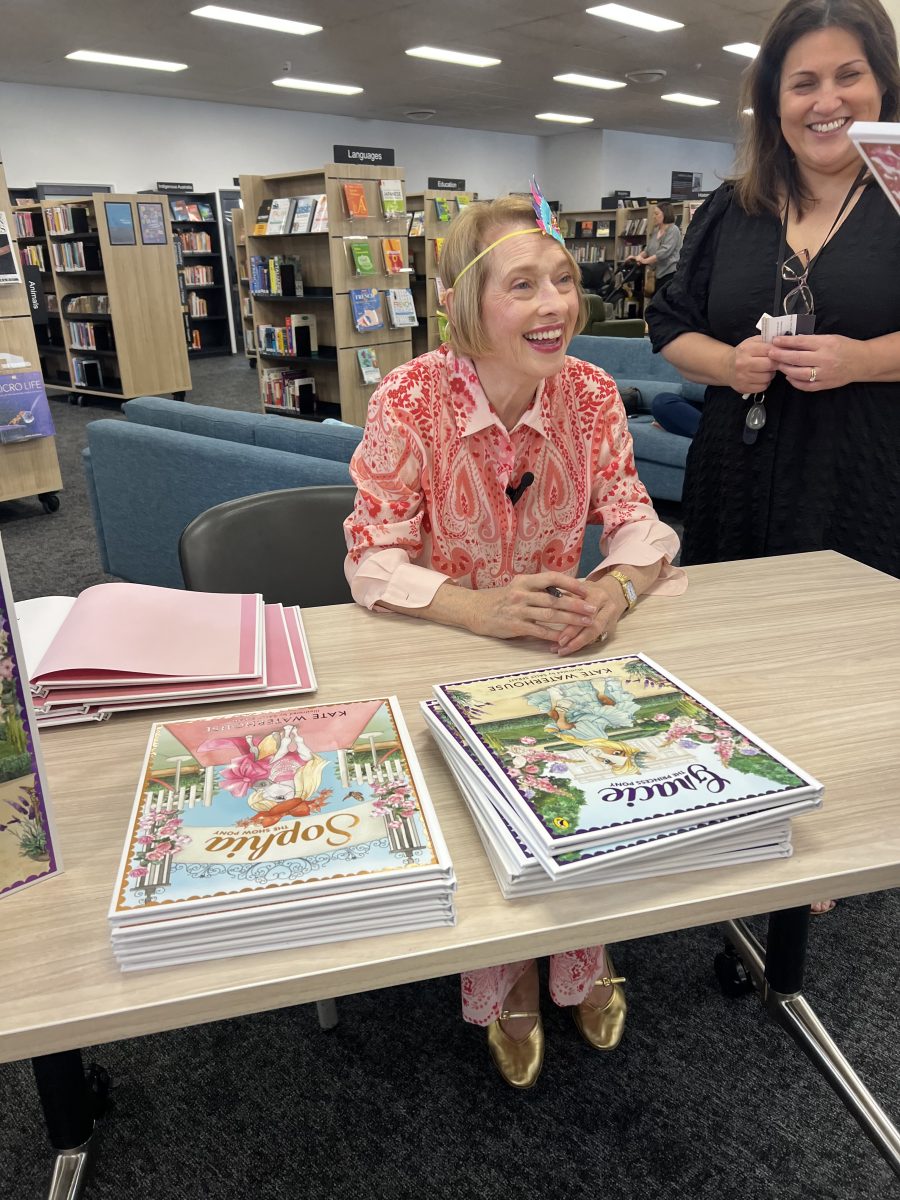
Gai Waterhouse (right) with cousin Christine Del Gigante in Griffith. Photo: Oliver Jacques.
Legendary horse trainer Gai Waterhouse visited Griffith on Thursday (5 September), where she captivated hundreds of people in a talk she gave at Griffith City Library before dining at local Italian restaurant La Scala.
It was a much-awaited return to the town she spent many summers as a teenager working and living with first cousin Christine Del Gigante, the longtime manager of the town’s library. Region caught up with Ms Waterhouse to reflect on her family’s Riverina roots, how Griffith has changed, her previous career as an actress in TV shows such as Doctor Who and the state of racing in Australia today.
Your father Tommy J Smith spent much of his childhood in Goolgowi. What was life like for him?
He lived in a wooden shack at Goolgowi, with a dirty wooden floor. His family were very poor and life was tough. My father had to trap rabbits and try and sell them on the side of the railways to earn money.
He was a brilliant man, able to seize whatever opportunity came his way and make the most of it. That enabled him to move up the ladder.
But when he was young, his mother gave him two pounds to catch the train to Melbourne and he never came back.
But he took you back to the area as a teenager?
Yes, he would get in his Rolls Royce and he’d drive through the country and drop me off in Griffith, where I’d spend a few weeks before Christmas.
Christine’s father was Ken Cullen, the local butcher; I’d stay with his family not far from Banna Avenue while I worked in the news agency owned by Pat Smith. That was my summer holiday routine; it gave me many of the skills I now employ in my business.
I had really fond memories of being here. Christine and I fought like cats and dogs; we were typical teenage girls, but we got on like a house on fire and still do.

Gai Waterhouse also did a reading of her daughter Kate’s children’s book Sophia the Show Pony. Photo: Supplied.
Christine took you up Banna Avenue today. How has it changed?
The paper shop where I worked is gone, it’s now a jewellery shop. The butcher shop is also now a jewellery shop. Griffith must be doing really well if it has all these jewellery shops.
Before you established yourself in racing you were an actress. Is it true you were in the TV show Doctor Who?
I was in a number of episodes; I played a Gallifreyian [a native of the fictional planet]. I still get royalty checks from Doctor Who, about 10 pounds a year and I get fan mail too; it’s so funny.
How tough was it as a woman breaking into the male-dominated racing industry?
It was very hard to get in, very hard to get accepted, very hard to get a licence. They’d comment on the colour of my lipstick, on my hat, things they’d never say to a man. They saw me as a pest. But it just made me more resilient.
What’s it like having a famous footballer [Sydney Roosters great Luke Ricketson] in your family as your son-in-law?
It’s great for one of my granddaughters who plays touch; her team is so far unbeaten in the Under 10s. It’s because they have a good coach – Luke Ricketson.
How do you feel about the state of racing in Australia at present?
Racing is buoyant at the moment, but unless they get people to come back to the tracks and punt, they’ve got a real problem. It should be free to go to the races – you don’t pay to go to the pub. They should be giving better odds on track than off track; we need things to entice people to come to the races.
What about government gambling reforms?
They’re a bit too tough on the punter and the bookmaker. If you make the taxes too harsh, people will find other ways of gambling and spending their money. People like to gamble; if you have prohibition people will find another way.
What’s your focus for the spring racing season?
My biggest job is to make sure we win some of the majors in Sydney and Melbourne. We have runners in The Everest [thoroughbred race], which we’ve never won … perhaps with a filly like Lady of Camelot. It’d be lovely to win the Cox Plate with a horse like Storm Boy or an overseas horse like New Endeavour.
Original Article published by Oliver Jacques on Region Riverina.






